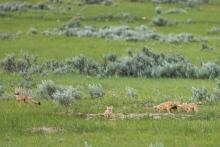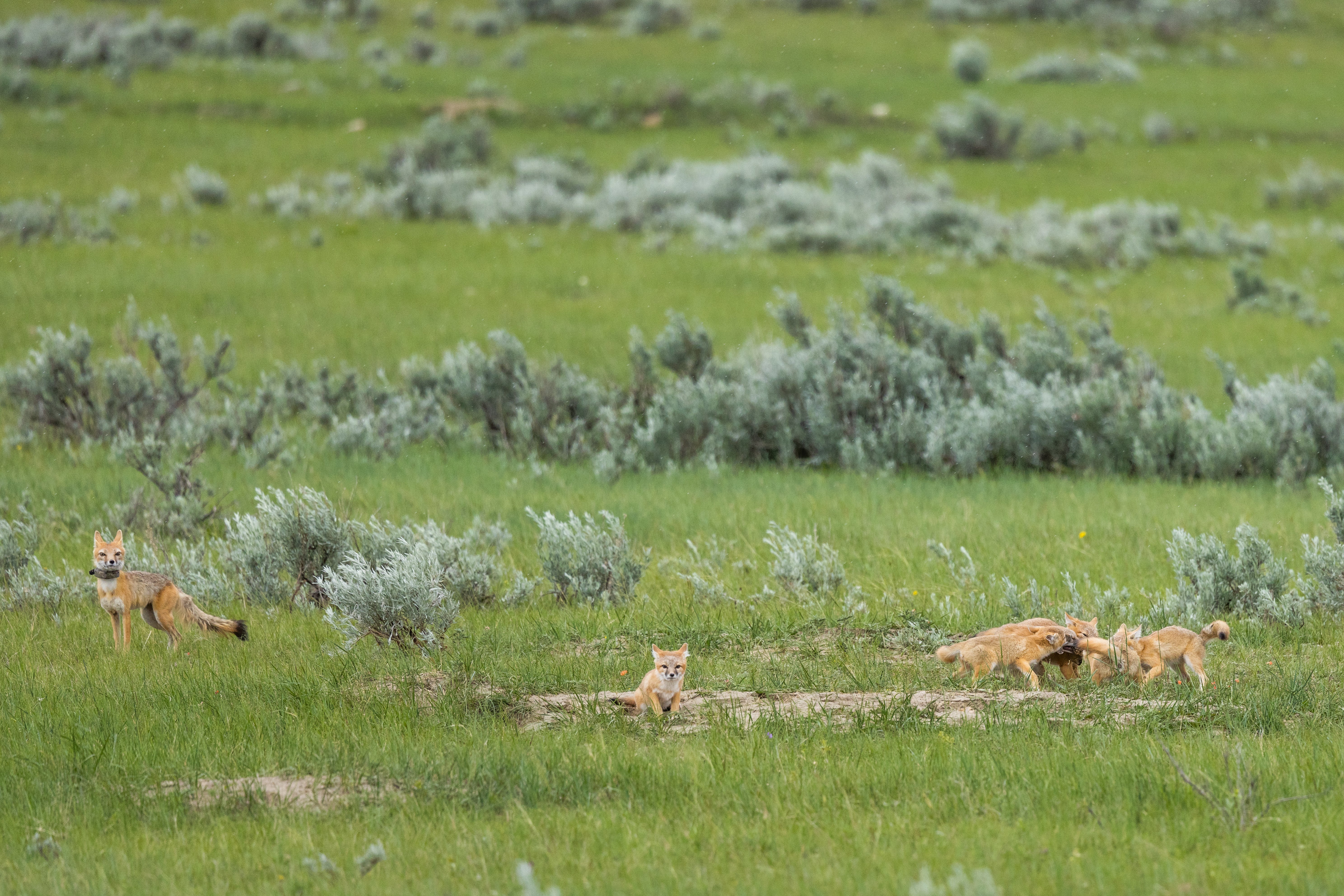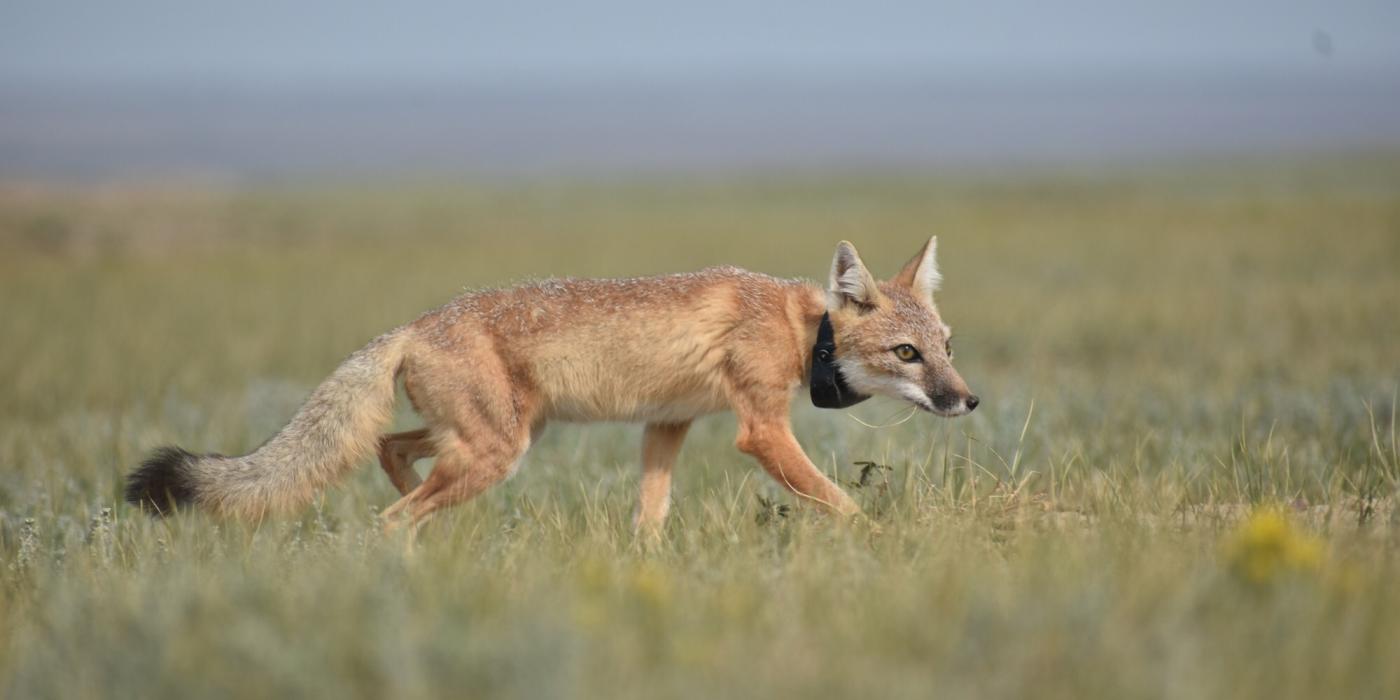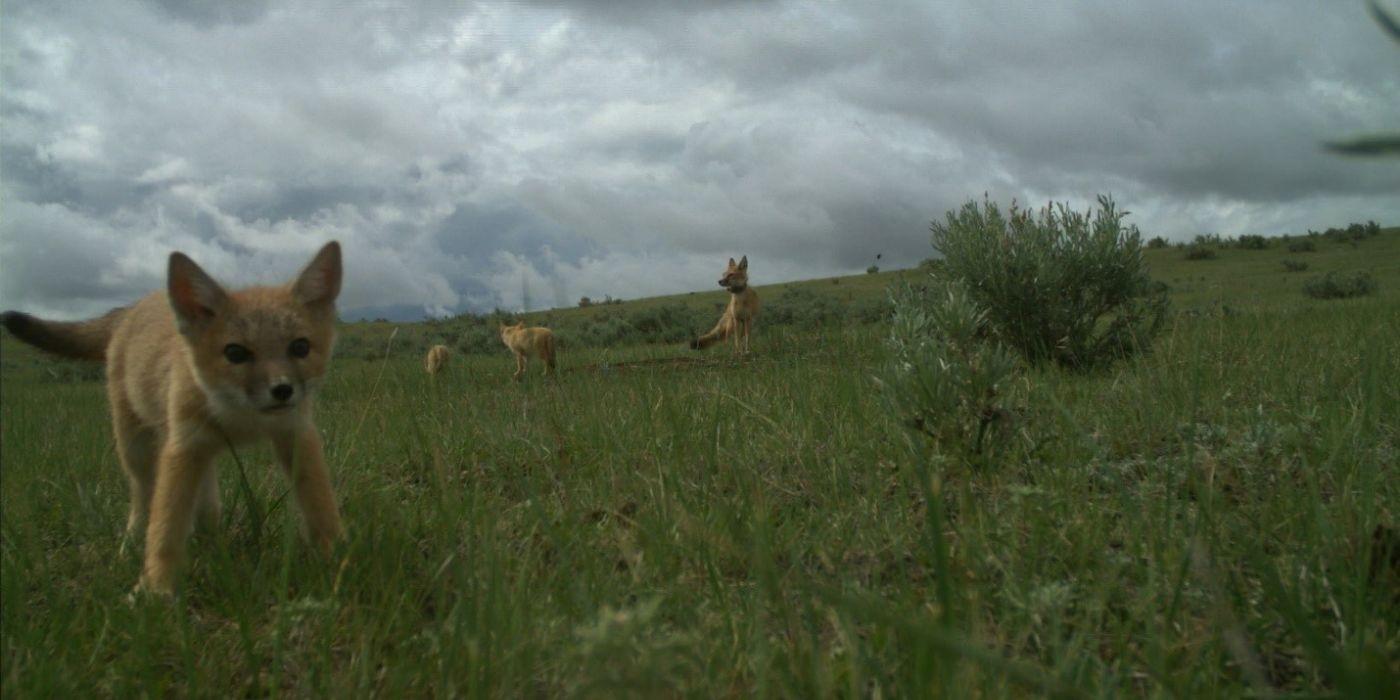Tribes Successful with Swift Fox Reintroduction Program at Fort Belknap
Recovery Boosted by Conservation Partners
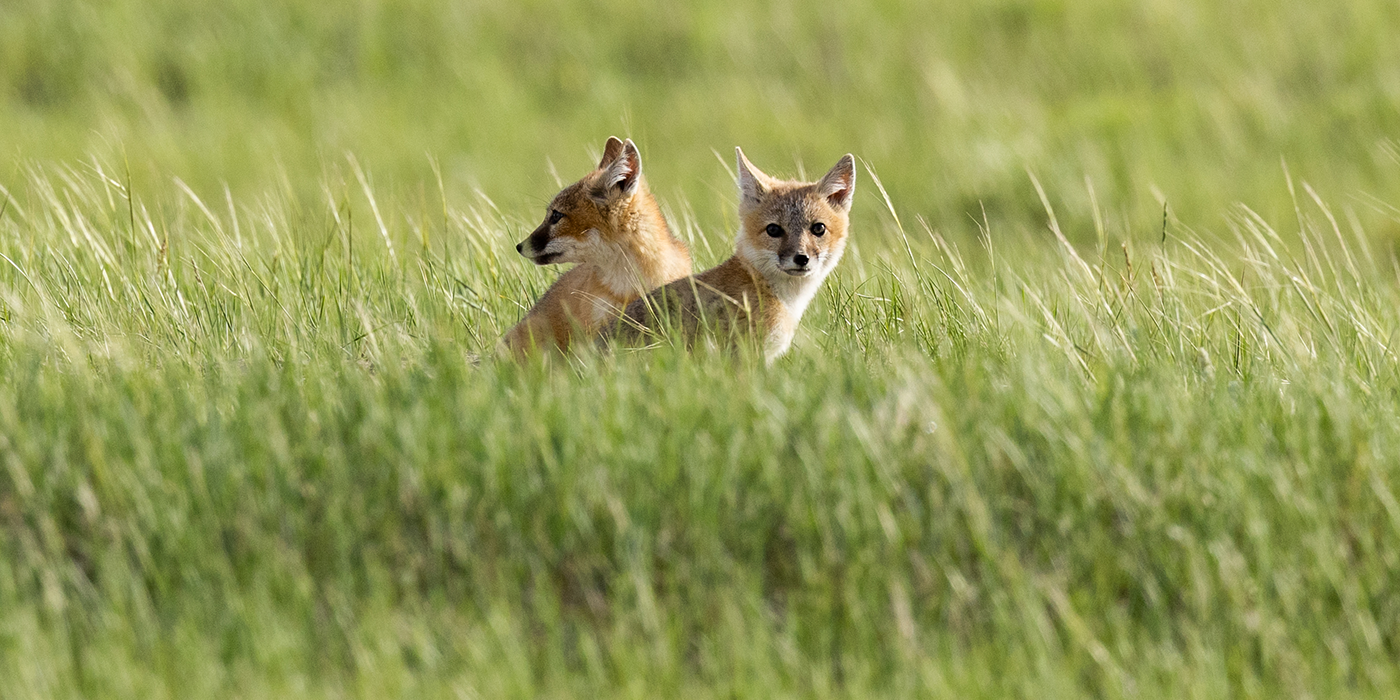
Today the Fort Belknap Indian Community commemorated three years of its swift fox recovery program with the release of three swift foxes on Tribal lands, bringing the total to 103 recovered back to these prairie grasslands. Based on post-release monitoring efforts, the native species is reproducing in the wild, which is a critical measure of success for a self-sustaining population.
“After being absent for more than 50 years, the swift fox has returned to the grasslands of Fort Belknap and our people could not be prouder,” said Harold “Jiggs” Main, director of the Fort Belknap Fish and Wildlife Department.
Over the last four years, the Nakoda (Assiniboine) and Aaniiih (Gros Ventre) Tribes of Fort Belknap have worked in collaboration with the Smithsonian’s National Zoo and Conservation Biology Institute, Aaniiih Nakoda College, Defenders of Wildlife, American Prairie, World Wildlife Fund and Wilder Institute/Calgary Zoo on this five-year reintroduction effort.
This week, three of 28 foxes trapped in Wyoming will be released during a special ceremony held by the Fort Belknap Indian Community. The remaining 25 foxes will be released later this week.
“This is an important educational opportunity for our students. They not only learn new field methods, but they are actively working with our Fish and Wildlife Department and the Smithsonian to return the swift fox to our homelands,” said Daniel Kinsey of Aaniiih Nakoda College.
Monitoring efforts via GPS collar tracking show some foxes traveled long distances, including one documented over 200 miles away, while most have settled on Fort Belknap and the surrounding areas in Phillips and Blaine counties in Montana. At least four females and males (four dens) have been documented pairing up or “denning” and 20 kits have been born in the wild since the original reintroduction of 27 foxes in fall 2020.
“The swift fox reintroduction is a collaborative program that brings together 15 organizations across multiple states, all contributing to the success of this interdisciplinary work,” said Hila Shamon, research ecologist at the Smithsonian’s National Zoo and Conservation Biology Institute. “There are several research projects tied to this program that will advance our understanding of swift fox ecology and reintroductions in general. We documented four dens with up to six kits, which indicates there is ample habitat for the foxes to reproduce within the reintroduction site.”
Trapping efforts have been led by the Smithsonian and Little Dog Wildlife in Wyoming and Colorado, states with healthy populations, for the last three years, and with trapping assistance from Defenders of Wildlife. The Wyoming Game and Fish Commission and Colorado Parks and Wildlife Commission approved permits for animals to be trapped and released at Fort Belknap as part of ongoing reintroduction efforts. Defenders of Wildlife and Wilder Institute/Calgary purchased the monitoring collars foxes receive prior to release at Fort Belknap. Additional support for the program was provided by the Wyoming Game and Fish Department and Colorado Parks and Wildlife.
“It has been an honor for Defenders to play a role in the Aaniiih and Nakoda effort to bring back swift fox to their lands, and also as a long-term partner to recover buffalo and endangered black-footed ferrets back to their lands,” said Chamois Andersen, Rockies and Plains senior representative at Defenders of Wildlife. “Fort Belknap is truly a model in native plains wildlife conservation.”
The swift fox is the latest extirpated species to return to Fort Belknap, joining other iconic prairie species successfully reintroduced to Indigenous lands under the leadership of the Fort Belknap Fish and Wildlife Department. Historically, swift foxes lived across much of North America’s Great Plains.
“The vast grasslands on Fort Belknap provide a home to a variety of avian and terrestrial wildlife while providing economic benefits to the Tribes through livestock grazing, recreation and other land uses. With support from numerous partners, Bureau of Indian Affairs and the local government, the Aaniiih and Nakoda people have been bringing Indigenous wildlife back to these native grasslands for over three decades,” said Tim Vosburgh, wildlife biologist with Fort Belknap Fish and Wildlife Department.
In addition to tracking animals with GPS collars, scientists collect blood and fecal samples ahead of release. This enables the team to use DNA samples to confirm survival and offspring production post release — the hallmark of a self-sustaining population. Camera trap data and ongoing fecal collection at strategically placed scent posts have also helped to confirm swift fox presence. Students from Aaniiih Nakoda College, Clemson University and George Mason University are assisting Fort Belknap and Smithsonian with the ongoing data collection and fieldwork.
“Since its inception, American Prairie has taken inspiration from the land stewardship and rewilding efforts of the Fort Belknap Community. We are proud to stand with our neighbors and support the repatriation of swift fox to their home in Montana's Great Plains,” said Beth Saboe, senior public relations manager for American Prairie.
Swift fox numbers declined precipitously in the late 1800s, mainly due to poisoning intended for coyotes and wolves and the loss of grassland habitat. During this same time, they were also eliminated from the northern portion of their range. Swift foxes made a comeback after successful reintroduction efforts began in 1983 in Canada and on the Blackfeet and Fort Peck Indian communities in Montana. However, these reintroduced populations have yet to reconnect with populations in the southern portion of their historic range. Establishing a population of swift foxes on Fort Belknap’s lands will expand the species’ occupied range in the north and help bridge the distribution gap between existing populations to the north and south.
Image Gallery

